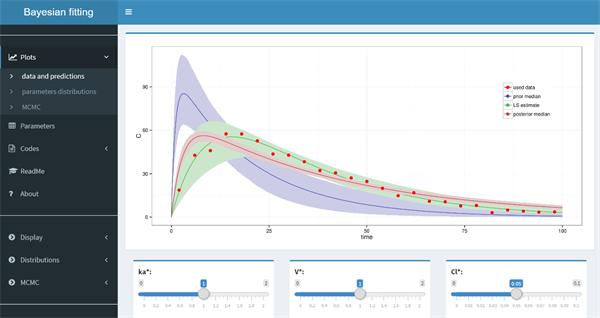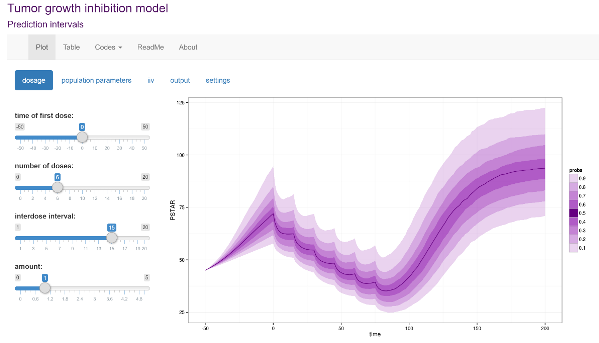Author: Marc Lavielle, Inria Saclay & Ecole Polytechnique, France on August 01, 2016 
I recently read "A Tutorial on Target-Mediated Drug Disposition (TMDD) Models" by Dua, Hawkins, and van der Graaf, published in CPT: Pharmacometrics & Systems Pharmacology. Not being myself a pharmacometrician, with very limited knowledge of these models, I was happy to see that some codes were provided as supplementary materials. Giving readers the ability to reproduce the numerical experiments of a paper is a practice that deserves to be widely followed.
However, I was unable to run these codes myself, as they were written in Berkeley Madonna, a desktop application for model visualization which I do not use. Therefore, instead of buying and installing BM on my computer, I decided to create Shiny applications for each of the proposed examples. Fortunately, the shinymlx function of the mlxR package allowed me to develop these applications very easily and rapidly. I can now take full advantage of these Shiny apps to explore these TMDD models, visualize their components, and better understand the role of each parameter.
There is much more… These Shiny apps are not devoted to a purely personal use: they are also web-based applications that can be uploaded on a server in order to share them with others. Several initiatives already exist: ISoP has made available a Shiny server for ISoP members to host their pharmacometrics-related applications, I have myself developed of number of applications using the mlxR package.
Such interactive applications are perfectly suited for model communication. They may also be useful for education purposes: teaching the differences between several absorption processes, or the differences between several error models is much easier when the student can visualize these differences. Shiny applications may also be helpful for introducing some important concepts and methods for model building (see for instance this introduction to population PK modeling).
This is not all… Shiny applications can easily be integrated into a webpage. No need to be an expert in HTML: just use R Markdown! This authoring format enables easy creation of dynamic documents with embedded R code chunks, Shiny widgets and graphics. Icing on the cake: for writing mathematics, R Markdown allows you to use Latex, a high-quality mathematical typesetting language. Latex is widely used in several communities (including mathematics, statistics, physics…) and deserves to also become a standard for pharmacometricians who aim to properly write mathematical equations. Furthermore, Latex is available as free software.

Personally, I have enthusiastically adopted R Markdown as a technical solution for writing scientific documents. The Simulx user guide, which combines texts, R codes, and fancy equations has been fully developed using R Markdown. The Shiny applications for the TMDD models mentioned above have been integrated into a webpage thanks to R Markdown as well (here is the source code that needs to be compiled from R in order to generate this webpage).
I am convinced that improved communication is key for pharmacometrics. I hope I have convinced you with this post that great tools for better communication are now available… and for free!
Disclaimer: The views of the products discussed in this post do not necessarily represent those of ASCPT or CPT: Pharmacometrics & Systems Pharmacology. Neither ASCPT nor PSP endorse any software applications.
Images from Marc Lavielle. Used with permission.

The comment feature is locked by administrator.